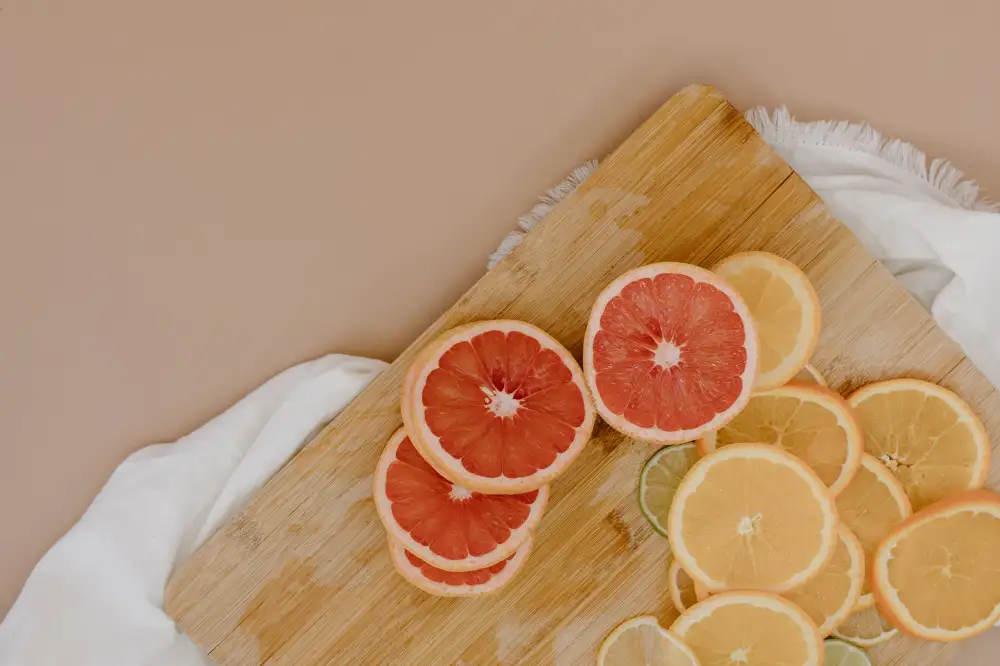Keep Your Fruits and Veggies Fresh with Our Top-rated Fridge Containers

- Benefits of Using Fruit and Veggie Containers for Fridge
- Types of Fruit and Veggie Containers Available
- Features to Consider When Choosing Fruit and Veggie Containers
- Tips for Properly Storing Fruits and Vegetables in Containers
- How to Organize Fridge Using Fruit and Veggie Containers
- Maintenance and Cleaning of Fruit and Veggie Containers
Proper storage is crucial to maintain the freshness and extend the shelf life of fruits and vegetables. These perishable items are highly sensitive to temperature, humidity, and ethylene gas, which can accelerate ripening and spoilage. By using specialized fruit and veggie containers for your fridge, you can create an optimal environment that helps preserve their quality, flavor, and nutrients. Let's explore the benefits of these containers and how they can revolutionize your food storage experience.
Benefits of Using Fruit and Veggie Containers for Fridge
Using fruit and veggie containers for your fridge offers numerous benefits. Firstly, these containers help maintain the freshness of your produce by providing a controlled environment with proper ventilation and humidity levels. This prevents premature spoilage and extends the shelf life of your fruits and vegetables.
Secondly, these containers help prevent cross-contamination between different types of produce. By separating them into individual compartments, you can avoid mixing odors and flavors, ensuring that each item retains its distinct taste and aroma.
Furthermore, fruit and veggie containers help organize your fridge effectively. With designated spaces for each type of produce, you can easily locate what you need without rummaging through a cluttered refrigerator. This not only saves time but also reduces food waste as you won't accidentally overlook items hidden at the back.
Lastly, using these containers helps reduce plastic waste by eliminating the need for single-use plastic bags or wraps. Many fruit and veggie containers are made from durable materials like BPA-free plastic or glass, making them reusable and environmentally friendly.
Overall, investing in fruit and veggie containers for your fridge is a practical choice that enhances freshness, minimizes waste, and promotes efficient organization in your kitchen.
Types of Fruit and Veggie Containers Available
When it comes to storing fruits and vegetables in the fridge, there are several types of containers available that can help keep them fresh for longer. One popular option is the plastic produce saver containers, which have special vents and trays to regulate airflow and moisture levels. These containers are designed to prevent moisture buildup and keep produce crisp.
Another type of container is the glass storage container with airtight lids. These containers are great for storing cut fruits and vegetables as they help maintain their freshness while also preventing any odor transfer. Glass containers are also microwave-safe, making it convenient to reheat leftovers or prepped ingredients.
For those who prefer eco-friendly options, there are also reusable silicone bags or beeswax wraps available. These alternatives provide a breathable environment for fruits and vegetables, allowing them to stay fresh without the need for plastic.
Lastly, there are specialized fruit and vegetable storage bins or drawers that can be placed directly in the refrigerator. These bins have adjustable humidity settings that mimic the natural conditions required by different types of produce.
Choosing the right type of container depends on personal preference, budget, and specific needs. It's important to consider factors such as durability, ease of cleaning, stackability, and size when selecting fruit and veggie containers for your fridge. By investing in high-quality containers that suit your requirements, you can ensure optimal freshness and extend the shelf life of your fruits and vegetables.
Features to Consider When Choosing Fruit and Veggie Containers
When choosing fruit and veggie containers for your fridge, there are several important features to consider. Firstly, look for containers that are made of BPA-free materials to ensure the safety of your food. Additionally, opt for containers with airtight seals to keep out moisture and maintain freshness. Adjustable dividers or compartments can be useful for separating different types of fruits and vegetables. Transparent containers allow you to easily see what's inside without opening them, reducing unnecessary exposure to air. Lastly, consider the size and shape of the containers to ensure they fit well in your fridge and maximize storage space.
Tips for Properly Storing Fruits and Vegetables in Containers
1. Separate ethylene-producing fruits: Ethylene gas can accelerate the ripening process of other fruits and vegetables. Keep ethylene-producing fruits like apples, bananas, and tomatoes separate from others to prevent premature spoilage.
2. Check for ripeness: Store ripe fruits and vegetables separately from unripe ones. This will help maintain their freshness and prevent over-ripening or rotting.
3. Use breathable containers: Opt for containers with ventilation holes or perforations to allow air circulation. This helps reduce moisture buildup, preventing mold growth and extending the shelf life of your produce.
4. Keep humidity levels in check: Different fruits and vegetables require different humidity levels for optimal storage. Leafy greens prefer higher humidity (around 90%), while most fruits do well in lower humidity (around 60-70%). Adjust the humidity settings on your containers accordingly.
5. Avoid washing before storage: Moisture can promote spoilage, so it's best to avoid washing your produce before storing them in containers. Instead, wash them just before consumption to maintain their freshness.
6. Remove excess moisture: Excess moisture can cause fruits and vegetables to deteriorate quickly. Line the bottom of your containers with paper towels or use absorbent pads to soak up any excess moisture.
7. Store delicate produce properly: Delicate fruits like berries should be stored in shallow containers to prevent crushing or bruising. Layer them with paper towels to absorb any excess moisture.
8. Rotate your produce: To ensure even usage and prevent waste, rotate your produce by placing newly purchased items at the back of the container while bringing older ones forward for easy access.
By following these tips, you can maximize the freshness of your fruits and vegetables, reducing food waste and enjoying their flavors for a longer period of time.
How to Organize Fridge Using Fruit and Veggie Containers
When it comes to organizing your fridge using fruit and veggie containers, there are a few key tips to keep in mind. Firstly, designate specific containers for different types of produce to prevent cross-contamination and ensure optimal freshness. For example, use one container for leafy greens, another for berries, and a separate one for root vegetables.
Next, consider the layout of your fridge. Place the containers with fruits and vegetables on the top shelves or in designated drawers to avoid any potential spills or leaks onto other food items. This will also make it easier to access and see what produce you have available.
Additionally, make use of clear containers or ones with transparent lids. This allows you to easily identify the contents without having to open each container individually. Labeling the containers can also be helpful, especially if you have multiple containers with similar-looking produce.
To maximize space efficiency, stack the containers neatly while ensuring proper airflow around them. Avoid overcrowding as this can lead to accelerated spoilage.
Lastly, remember to rotate your produce regularly. Use older items before newer ones to minimize waste and ensure you're consuming the freshest fruits and vegetables first.
By following these organization tips, you'll not only keep your fridge tidy but also extend the shelf life of your fruits and veggies while maintaining their quality and flavor.
Maintenance and Cleaning of Fruit and Veggie Containers
Maintenance and cleaning of fruit and veggie containers is essential for ensuring the longevity of your produce. To keep your containers in top condition, follow these simple steps. Firstly, always empty and rinse the containers after use to remove any leftover food particles or residue. Use a mild dish soap and warm water to clean both the inside and outside of the container thoroughly. Avoid using harsh chemicals or abrasive scrubbers that may damage the container's material. After washing, make sure to dry the containers completely before storing them away. Regularly inspect your containers for any signs of wear or damage, such as cracks or discoloration, and replace them if necessary. By maintaining and cleaning your fruit and veggie containers properly, you can ensure their effectiveness in keeping your produce fresh for longer periods.
Investing in high-quality fruit and veggie containers for your fridge is a game-changer when it comes to preserving the freshness and extending the shelf life of your produce. By providing the ideal storage conditions, these containers help maintain the nutritional value, flavor, and texture of fruits and vegetables.
Properly storing fruits and vegetables in these containers prevents them from spoiling quickly due to exposure to moisture, air, and ethylene gas. The airtight seals and adjustable vents control humidity levels, preventing wilting or rotting. Additionally, the transparent design allows you to easily identify what's inside without opening the container, reducing unnecessary handling.
When choosing fruit and veggie containers, consider features like size options, stackability, durability, and BPA-free materials. Opt for containers with dividers or compartments to separate different types of produce. This helps prevent cross-contamination while maximizing space utilization.
To ensure optimal freshness, remember to store fruits separately from vegetables as some fruits release ethylene gas that can accelerate ripening or spoilage in certain vegetables. It's also essential to wash produce before storing them in containers to remove any dirt or bacteria.
Organizing your fridge using these containers not only keeps things tidy but also makes it easier to access your fruits and veggies. Group similar items together and label each container for quick identification.
Regular maintenance and cleaning of fruit and veggie containers are crucial for their longevity. Wash them with warm soapy water after each use and dry thoroughly before reuse. Check for any cracks or damage that may compromise their effectiveness.
In conclusion, investing in top-rated fruit and veggie containers is a wise choice if you want to enhance freshness and extend the shelf life of your produce. These containers provide optimal storage conditions while keeping your fridge organized. So go ahead, give your fruits and veggies the care they deserve and enjoy their peak flavor and nutrition for longer.
Published: 13. 02. 2024
Category: Home



